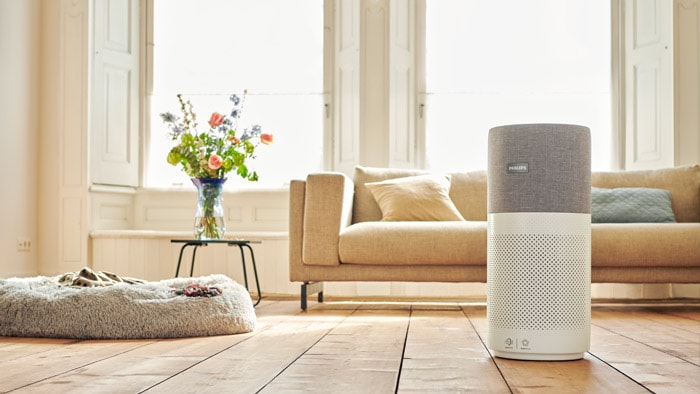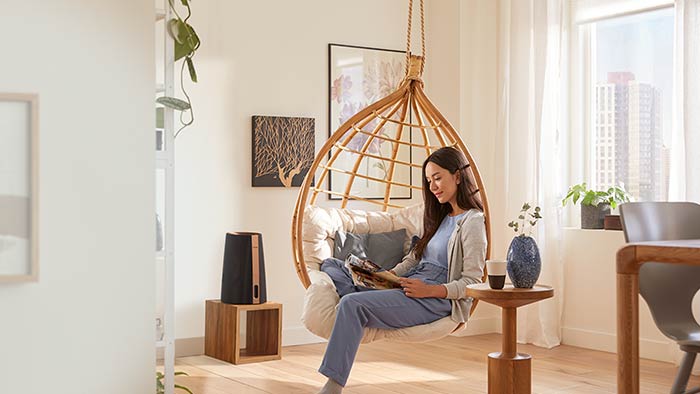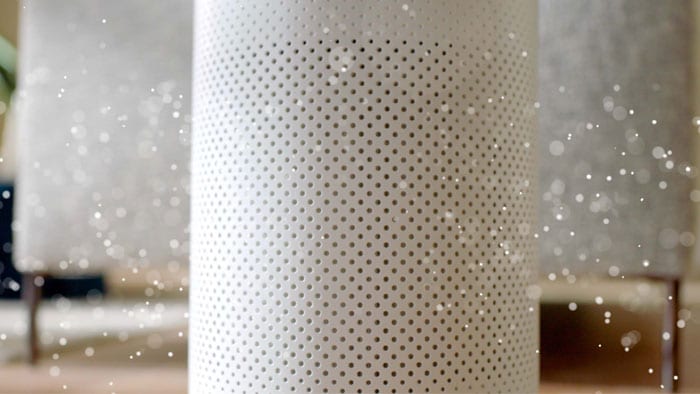Reading time: 5 Min
Air purifiers and viruses: can an air purifier filter viruses from the air?
If you’ve ever wondered about how you can effectively remove viruses from the air and limit virus transmission in your home, you’re in the right place! But what exactly are viruses, how do they transmit in the air, and can air purifiers remove viruses? To find the answers to these questions and learn about how to remove viruses from the air, read our guide below.
What are viruses?
Let’s think for a second about viruses before we get onto the role of an air purifier. Viruses are not capable of replicating on their own. They’re intracellular parasites, which means they can only replicate after infecting other host cells.1 Using a special air purifier for viruses can help filter viral diseases circulating in the air in your home, preventing the viruses from replicating and preventing you from breathing them in.
Viruses are made up of one or more molecules and can be enclosed in a protein shell. Scientists have found that they tend to vary in diameter size from 20 to 250-400 nanometres.2 The Air Purifier Series 3000i is capable of removing up to 99.9% of viruses, and ultra-fine particles as small as 0.003 microns (that’s 3 nanometres!). This makes it ideally suited as an air purifier for viruses.

How to remove viruses from the air
Certain viruses are transmitted by sneezing or coughing, via respiratory droplet infections. This is when pathogens get into the air through droplets of saliva. So, do air purifiers remove viruses? Let’s use the Philips Air Purifier 3000i as an example. It uses a HEPA (High Efficiency Particulate Air) filter to remove 99.97% of aerosols, including those that may contain respiratory viruses, from the air. The filtration process cleans the air and can significantly reduce the risk of droplet infection.
Can air purifiers remove viruses from my home?
If you’re wondering do air purifiers kill viruses, the answer is yes. They trap viruses in their filters, removing them from the air. Philips air purifiers have been clinically proven to remove viruses; in a room contaminated with a flu virus, our air purifiers removed 99.97% of viruses and aerosols within just half an hour.3 Just make sure you clean and change the filter when your device alerts you.
It’s important to remember that the size of your room or office will have an impact on the how effectively an air purifier can remove viruses from the air. If you want to remove viruses from the air a larger space, such as a shared office, you might need an air purifier with a higher Clean Air Delivery Rate (CADR). Something like the Philips Air Purifier 3000i is suitable for rooms of up to 135 m², because of its high CADR, and it cleans smaller rooms of 20 m² in just eight minutes.
What you need
-
3000i Series
Air Purifier for XL Rooms
AC3033/30
- Purifies rooms up to 135 m²
- 520 m³/h clean air rate (CADR)
- HEPA & Active Carbon filter
- Connected with Air+ app
- Strictly tested for quality
-
- Purifies rooms up to 98 m²
- HEPA & Active Carbon filter
- 380 m³/h clean air rate (CADR)
- Connected with Air+ app
- Removes up to 99.9% of viruses and aerosols
-
- Works in rooms up to 78 ㎡
- 300 ㎥/h clean air rate (CADR)
- HEPA & Active carbon filter
- Connected with Air+ app
- Rigorously tested for quality
What protects against viral diseases?
It’s worth nothing that an air purifier alone does not protect against viral diseases. In addition to an air purifier, viruses should also be battled with further protective measures:
Viruses or bacteria?
Source(s): 1 NCBI: Viruses Structure, Function and Uses
In contrast to viruses, bacteria consist of a cell with its own metabolism. They multiply through cell division, while viruses can only reproduce with the help of a host cell. An air purifier is also useful for removing bacteria in the air, too. The 3-layer filtration system of the Philips Air Purifier 3000i captures 99.97% of ultra-fine particles as small as 0.003 microns, including bacteria. It can also remove 99.99% of allergens from the air. Worth knowing when you’re considering how effective an air purifier can be and what it can do!
Now you know a bit more about viruses and how they travel through the air and have answers to questions like ‘do air purifiers kill viruses?’ and ‘do air purifiers remove viruses?’. Go forth and share your knowledge!
2 Britannica: Viruses Size and Shape
3 Microbial Reduction Rate Test conducted at Airmid Health group Ltd. tested in a 28.5-m³ test chamber contaminated with airborne influenza A(H1N1).










